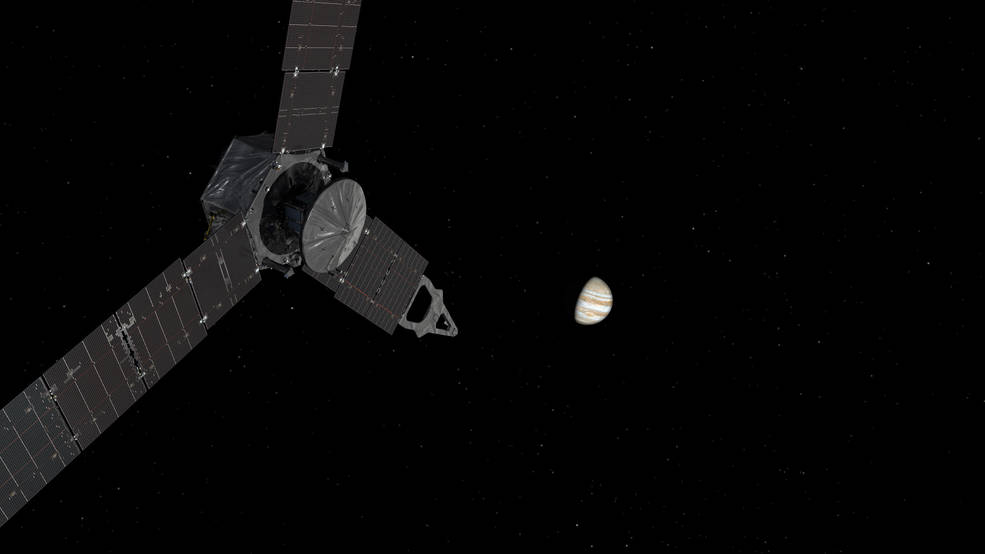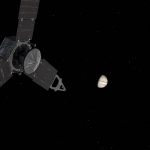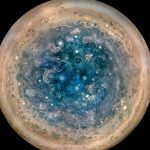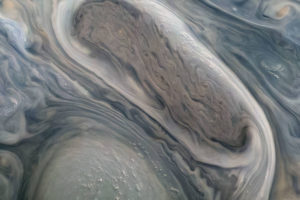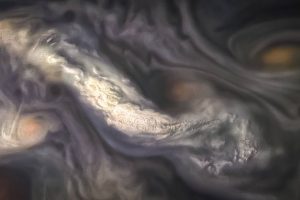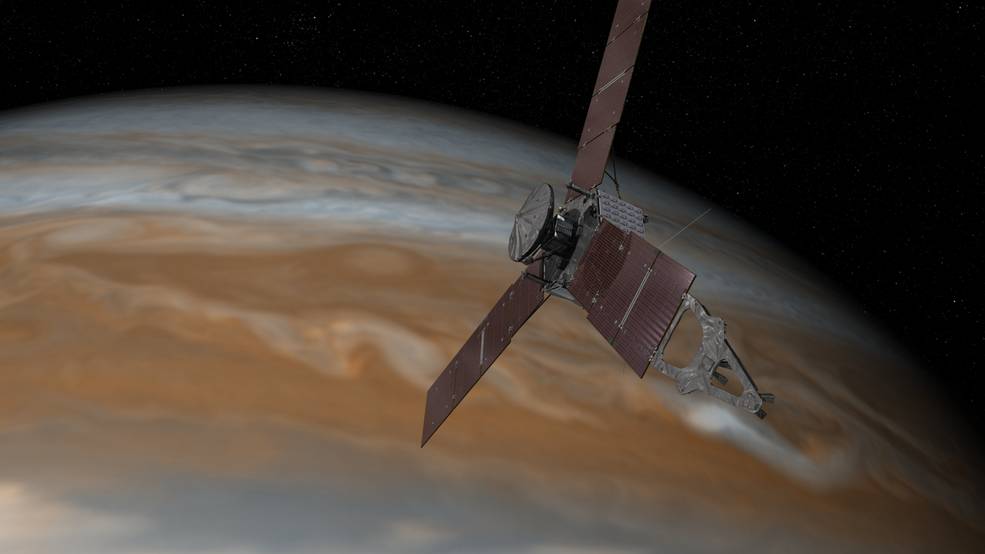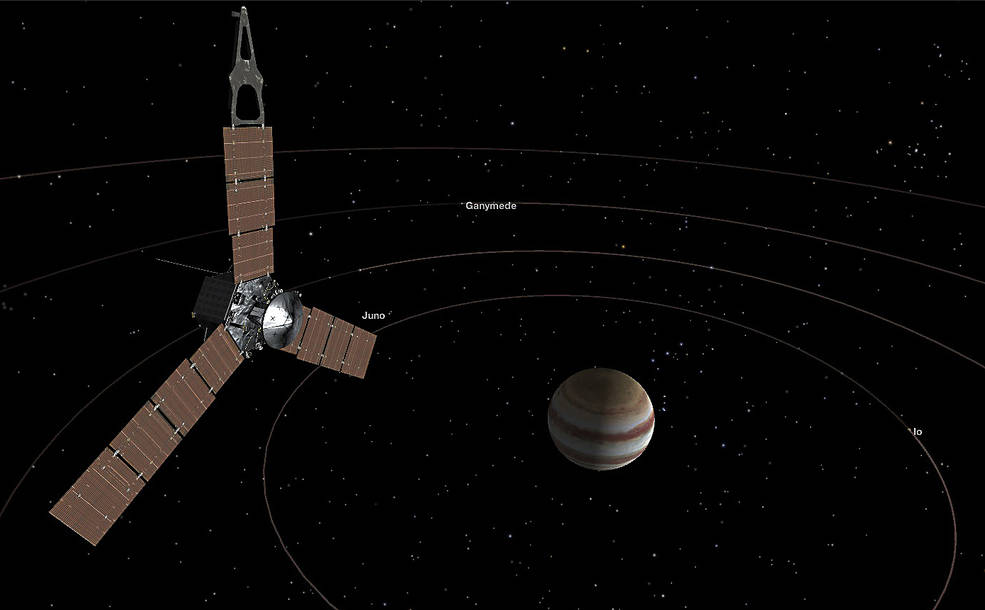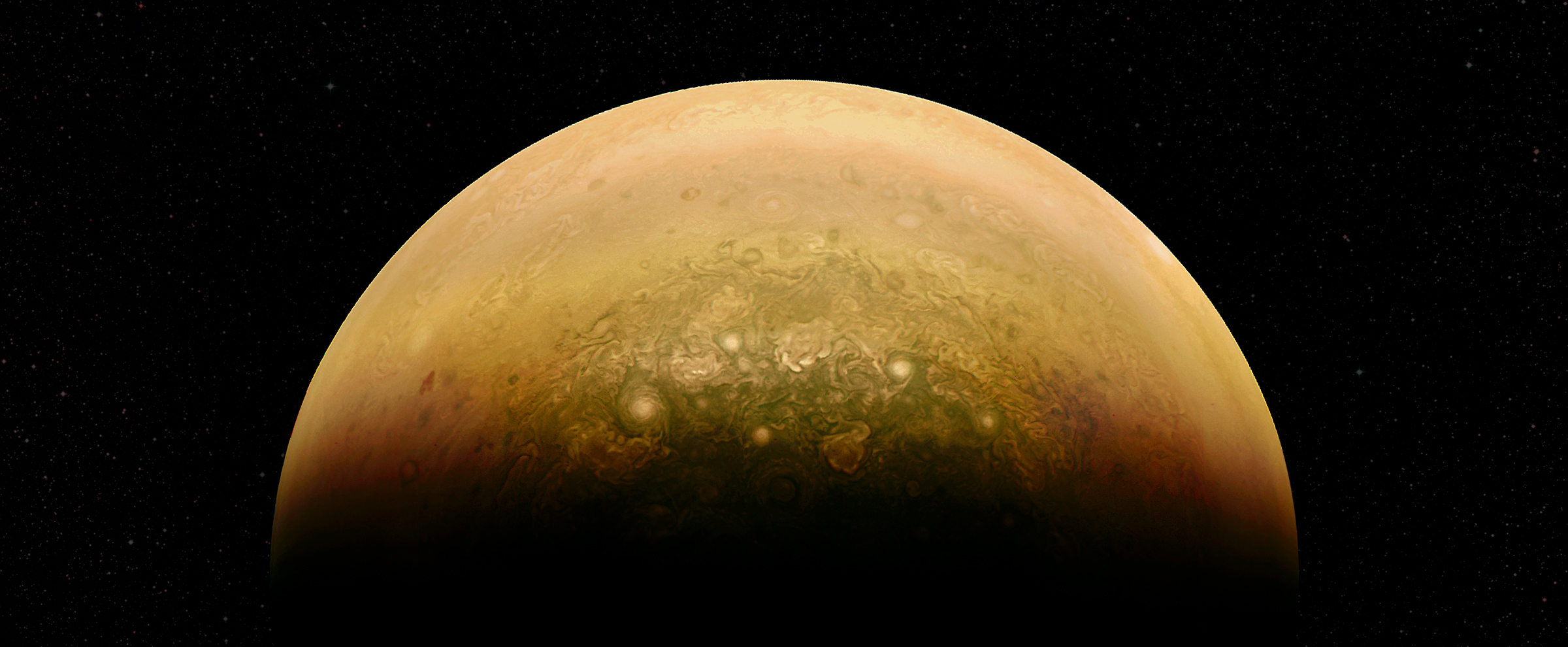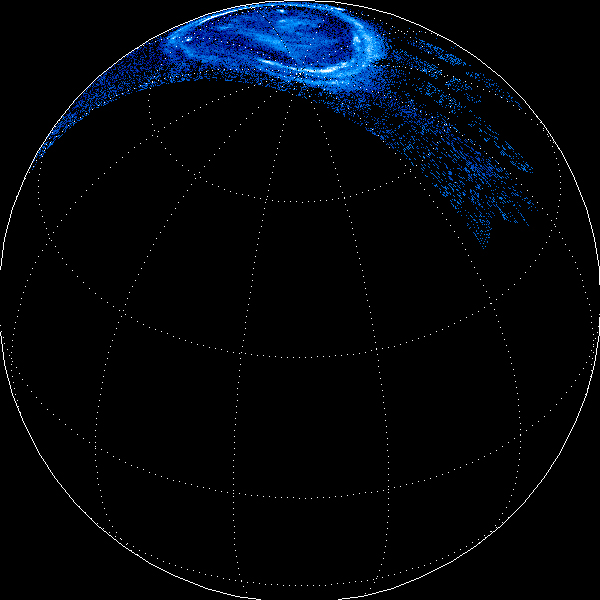2017年5月末に行われた記者会見の情報をもとに、最新の木星探査結果を3回にわたり掲載します。
最初はボルトンが発表した木星の不思議な大気(表面の雲)の模様が実は予想よりずっと表面近くで発生していたことが分かったということです。
SCOTT BOLTON

This artist’s concept shows the pole-to-pole orbits of the NASA’s Juno spacecraft at Jupiter.
これはNASAの木星探査機ジュノーが北極から南極を通過する軌道をイラストにしたコンセプト図です。
Image credit: NASA/JPL-Caltech/SwRI

This image shows Jupiter’s south pole, as seen by NASA’s Juno spacecraft from an altitude of 32,000 miles (52,000 kilometers). The oval features are cyclones, up to 600 miles (1,000 kilometers) in diameter. Multiple images taken with the JunoCam instrument on three separate orbits were combined to show all areas in daylight, enhanced color, and stereographic projection.
この画像は、NASAの探査機ジュノーが32,000マイル(52,000キロメートル)の高度から見た木星の南極を示しています。 特徴的な楕円形はサイクロンで、直径が最大600マイル(1,000キロメートル)あります。 ジュノーカムで3つの別々の軌道上から撮影した複数の画像で昼光、強化色、および立体投影のすべての領域を合成して表示しています。
Image credit: NASA/JPL-Caltech/SwRI/MSSS/Betsy Asher Hall/Gervasio Robles

NASA’s Juno spacecraft is investigating the structure and convection of Jupiter’s interior by reaching through the meteorological layer, the top layer of the planet’s atmosphere. A possible inner “rock” core is shown, surrounded by a metallic hydrogen envelope (shown in blue) and outer envelope of molecular hydrogen (shown in brown), all hidden beneath the visible cloud deck. Juno’s gravity field data will reveal new clues about Jupiter’s core.
NASAのジュノー探査機は木星の大気の最上層である気象層に到達し、木星の内部の構造と対流を探査しています。 内部の「岩石」コアが金属水素(青色の部分)と分子水素(茶色の部分)で囲まれており、すべてが木星を覆う雲の下に隠れています。 ジュノーの重力フィールドの観測データは、木星の核についての新しい手掛かりを明らかにするでしょう。
Image credit: NASA/JPL-Caltech/SwRI

NASA’s Juno spacecraft carries an instrument called the Microwave Radiometer, which examines Jupiter’s atmosphere beneath the planet’s cloud tops. This image shows the instrument’s view of the outer part of Jupiter’s atmosphere. Before Juno began using this instrument, scientists expected the atmosphere to be uniform at depths greater than 60 miles (100 kilometers). But with the Microwave Radiometer, scientists have discovered that the atmosphere has variations down to at least 220 miles (350 kilometers), as deep as the instrument can see. In the cut-out image to the right, orange signifies high ammonia abundance and blue signifies low ammonia abundance. Jupiter appears to have a band around its equator high in ammonia abundance, with a column shown in orange. This is contrary to scientists’ expectations that ammonia would be uniformly mixed.
NASAのジュノー探査機には、木星を覆う雲の下にある大気を調べるため、マイクロ波放射計という機器が搭載されています。 この画像は木星の大気の外側の部分の観測結果です。ジュノーに搭載しているこの観測装置のデータを見る前までは、科学者たちは、60マイル(100キロメートル)以上の深さくらいまで雰囲気が均一であると想定していました。 しかし、マイクロ波放射計による観測結果では、大気が少なくとも220マイル(350キロメートル)まで変動していることがわかりました。 右側の切り抜き画像では、オレンジは高いアンモニアの存在量を示し、青色は低いアンモニアの存在量を示している。 木星には、赤道の周りにアンモニアが豊富な地帯があり、オレンジ色の帯になっています。 これはアンモニアが均一に存在しているだろうという科学者の推定に反したものでした。
Credits: NASA/JPL-Caltech/SwRI
次回木星の最新探査結果 – 2 of 3について
次は木星の恐るべき磁場と、南極の不思議な光についてです。
